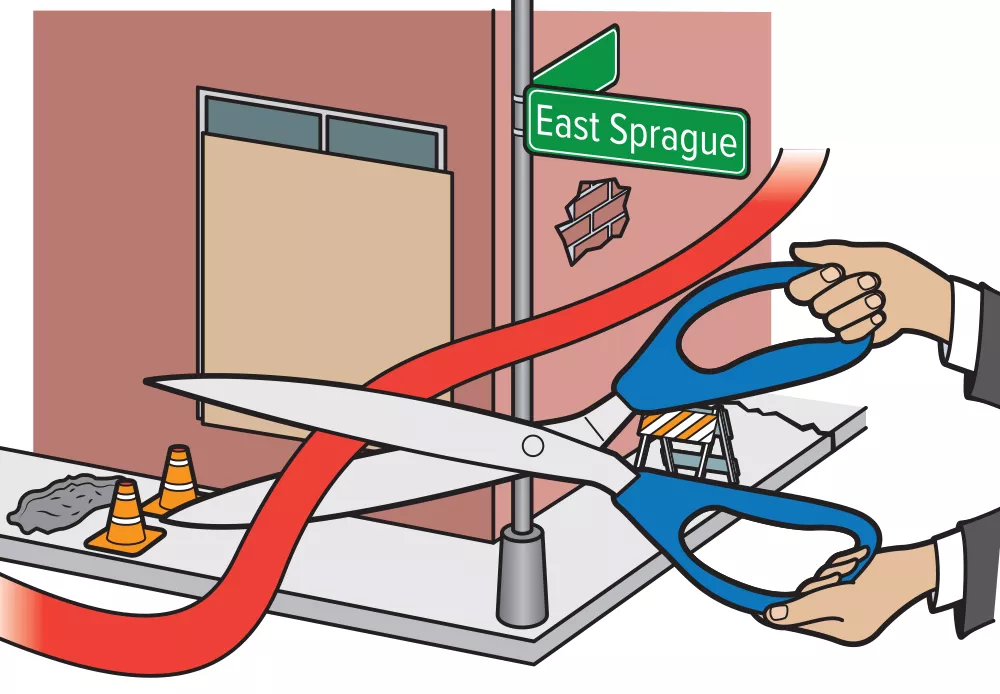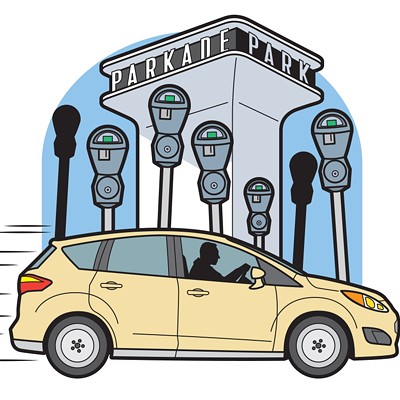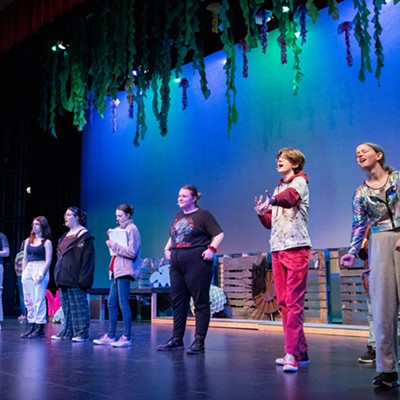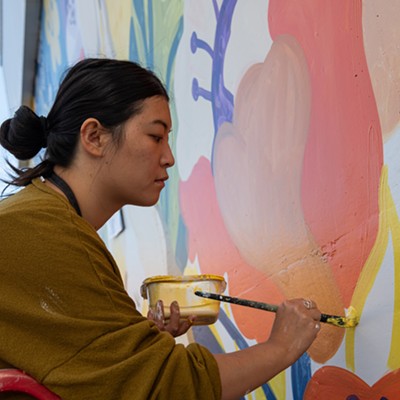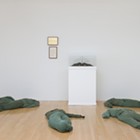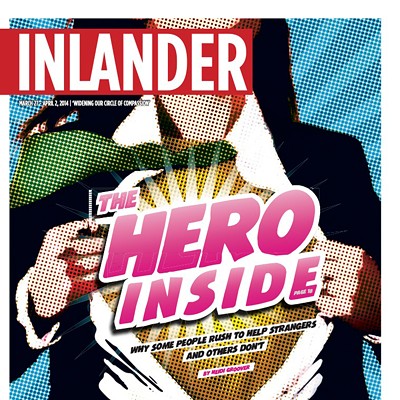When Jennifer Hansen moved to the South Perry neighborhood eight and a half years ago, the area's changes were only skin deep. The streets and sidewalks looked fresh; the decorative lighting was installed. But many of the storefronts were still empty. In the time since, she's seen the area spring to life with trendy restaurants, outdoor movie showings on warm summer nights and, most of all, a feeling of safety.
"People are out jogging, they're walking dogs, they're on their porch, they're saying 'Hi' when they're gardening," Hansen says. "It went from a reputation of being dangerous to a reputation of being desirable."
Now, just across the freeway, Hansen and others hope to see the same thing happen to another historically hardscrabble area of town, East Sprague.
A team of city leaders chose the area for a new influx of cash, and Hansen, a health programs specialist for the Spokane Regional Health District, will lead the door-to-door effort to educate residents about the money coming their way. Called "targeted and concentrated investment," the approach will take about $5 million from various city funds aimed at redevelopment — funds that are usually spread among different neighborhoods across the city — and pile it all in one part of the city at once. Among the pots of money are funds to buy, rehab and resell abandoned homes, replace sidewalks and repair roads.
For many, the strip of blacktop east of downtown still brings to mind used car lots and prostitution, but it's already begun to turn around. Dotting the street are restaurants, vintage shops and Sprague Union Terrace, a glossy new mixed-use complex. Jim Hanley, who owns the Tin Roof, a furniture store his father started more than 50 years ago, says the changes on South Perry are just what he hopes to see in his area.
"That's just how things work. You start a little fire and pretty soon you've got a roaring bonfire, and that's just what's happened up there," he says. "We're on the way already and this will accelerate it."
But the changes on Perry took years of a little funding here and a little there. Council President Ben Stuckart compares that to "spreading peanut butter" and says it's exactly what the city should avoid with this project. He led the effort to choose one area of town and concentrate the money there for quicker, more prevalent results.
On a cold November day, city council members, neighborhood leaders and Hansen, from the Health District, wound up and down East Sprague, counting dilapidated houses and chances for revival. The area presented the most opportunity for improvement and had a group of residents and business owners already meeting regularly.
The idea, largely credited to Stuckart, isn't entirely new. Milwaukee's "Targeted Investment Neighborhoods" focus housing rehab dollars in small areas of six to 12 city blocks for three years at a time. In Richmond, Va., "Neighborhoods in Bloom" receive an influx of city and grant dollars to improve homes and buildings and spur private economic activity.
But in Spokane, where revitalization can take decades, Stuckart sees significant infrastructure improvements five years in the future. After a decade, he believes the area will see real economic growth, with more businesses and more people living in the area.
Since announcing the target area, Stuckart says he's gotten calls about resources he didn't even know were up for grabs, like historical preservation funding and public art, that might now be headed for East Sprague.
A task force will begin meeting this month to determine just what the improvements in the area will look like, but it's likely to start the way Perry did: sidewalks, streets and trees. Hanley, from the Tin Roof, rattles off all the changes already taking place in the area, then counts the 27 studies that have been done on how to revitalize the area.
"We don't need any more studies," he says. "This is the magic spark to get everything going."♦

